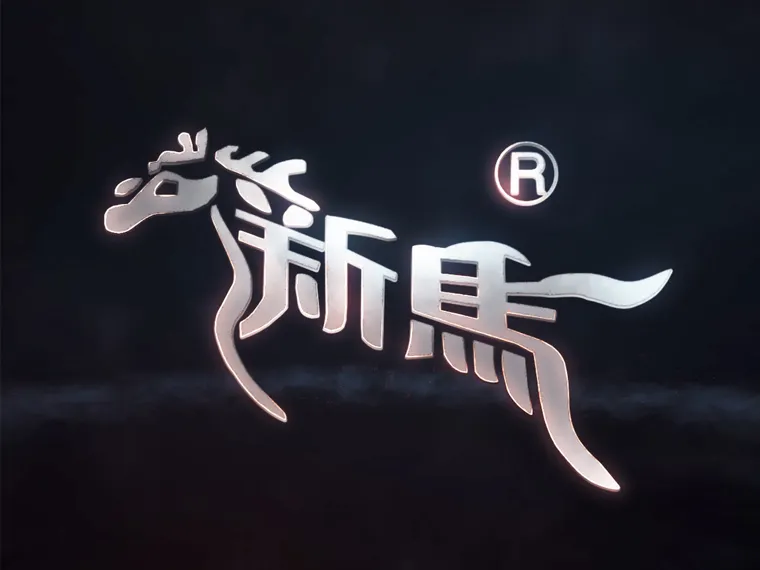Comparação entre meios de moagem com alto teor de cromo e meios de moagem comuns
Dureza
Meios de moagem com alto teor de cromo: Alto teor de cromo (tipicamente Cr > 10%, comumente 12%-18%) forma um grande número de partículas de carboneto de cromo de alta dureza. Através de tratamento térmico adequado (têmpera + revenimento), a dureza superficial pode atingir HRC 58-65 ou até mais. Estes bolas de moagem de alta dureza apresentam excelente resistência ao desgaste.
Mídia de moagem comum:
- Esferas de ferro fundido com baixo teor de cromo: Baixo teor de cromo (tipicamente Cr < 5%, comumente 1%-3%), com formações de carboneto consistindo principalmente de Fe3C mais macio. A dureza está tipicamente na faixa de HRC 45-55 e, após tratamento térmico, o limite superior pode se aproximar de HRC 58, mas a dureza geral é menor do que a das esferas com alto teor de cromo.
- Esferas de Aço Forjadas: Feitas de aço carbono ou aço de baixa liga, com dureza amplamente dependente da composição do material e do processo de tratamento térmico, geralmente na faixa de HRC 45-55. A uniformidade da dureza não é tão alta quanto a das esferas fundidas.
- Esferas de aço comuns: normalmente têm a menor dureza.
Resistência ao desgaste
Esferas de moagem com alto teor de cromo: Excelente resistência ao desgaste. O carboneto de cromo de alta dureza resiste eficazmente ao corte e ao desgaste do material. Sob as mesmas condições de trabalho, as esferas com alto teor de cromo duram de 2 a 4 vezes mais do que as esferas com baixo teor de cromo, e até 5 a 8 vezes mais, ou até mais, em comparação com as esferas de aço forjado comuns.
Mídia de moagem comum:
- Esferas de ferro fundido com baixo teor de cromo: A resistência ao desgaste é melhor do que as esferas de aço forjado comuns, mas significativamente menor do que as esferas com alto teor de cromo. A vida útil é cerca de 1,5 a 2 vezes maior do que as esferas de aço forjado comuns, mas muito menor do que as esferas com alto teor de cromo.
- Esferas de aço forjadas / esferas de aço comuns: a resistência ao desgaste é a mais baixa. Em condições de alto desgaste, elas se desgastam rapidamente e exigem reposição e substituição frequentes.
Resistência / Resistência ao Impacto
Esferas de moagem com alto teor de cromo: Relativamente quebradiças. Embora a tenacidade do ferro fundido com alto teor de cromo possa ser melhorada ajustando a composição (como adicionando molibdênio, cobre, níquel, etc.) e otimizando o tratamento térmico (controlando a estrutura da matriz para obter martensita temperada tenaz), ele é inerentemente mais quebradiço. Essa fragilidade é particularmente perceptível em esferas de grande porte (> Φ60 mm) ou quando submetido a forças de impacto excepcionais, que podem causar fratura.
Mídia de moagem comum:
- Esferas de ferro fundido com baixo teor de cromo: mais resistentes do que as esferas com alto teor de cromo, com menor tendência à fratura.
- Esferas de Aço Forjadas: As mais resistentes. O processo de forjamento torna a estrutura interna densa, com grãos finos, oferecendo excelente resistência ao impacto e capacidade antifratura, especialmente adequada para esferas grandes ou condições de impacto extremo.
- Bolas de aço comuns: Relativamente boa tenacidade.
Resistência à corrosão
Meios de moagem com alto teor de cromo: Melhor resistência à corrosão. Em moagem úmida ou em lamas com certas propriedades corrosivas, bolas de moagem com alto teor de cromo oferecem resistência superior à corrosão em comparação aos meios comuns, reduzindo o desgaste causado pela corrosão.
Meios de moagem comuns: Baixa resistência à corrosão. Em moagem úmida ou ambientes corrosivos, o desgaste por corrosão acelera o desgaste geral.
Custo
Meios de moagem com alto teor de cromo: os mais caros. As matérias-primas (ferro com alto teor de cromo, ferro com molibdênio e outras ligas) são caras, e o processo de produção (especialmente o tratamento térmico) é mais complexo, resultando em maior consumo de energia.
Mídia de moagem comum:
- Esferas de ferro fundido com baixo teor de cromo: o preço é menor do que o das esferas com alto teor de cromo, mas maior do que o das esferas de aço forjado comuns.
- Esferas de aço forjadas / Esferas de aço regulares: O menor preço.
Como escolher?
- Considere a dureza do material: para moer materiais duros, bolas de alto teor de cromosão a primeira escolha, oferecendo melhor eficiência econômica.
- Considere a resistência ao impacto e o risco de fratura: em ambientes de impacto extremamente alto ou propensos a fraturas (como grandes moinhos com esferas grandes), as esferas de aço forjadas têm a vantagem da tenacidade.
- Avalie a corrosividade: Em condições de retificação úmida, esferas com alto teor de cromo oferecem resistência superior à corrosão. Se a corrosão for severa, esferas com alto teor de cromo são mais vantajosas.
- Considere os custos: Se o orçamento for limitado e o material for relativamente macio, as esferas de ferro fundido com baixo teor de cromo oferecem melhor custo-benefício. Se o objetivo for os menores custos operacionais a longo prazo e o mínimo tempo de inatividade, as esferas com alto teor de cromo oferecem vantagens a longo prazo.
- Considere o tipo e as especificações do moinho: Para moinhos grandes, especialmente os semi-autógenos, diferentes tamanhos de esferas podem ser combinados (esferas grandes de aço forjado para tenacidade, esferas pequenas de alto teor de cromo para resistência ao desgaste). Para moinhos de bolas comuns, a escolha depende do material a ser moído.

